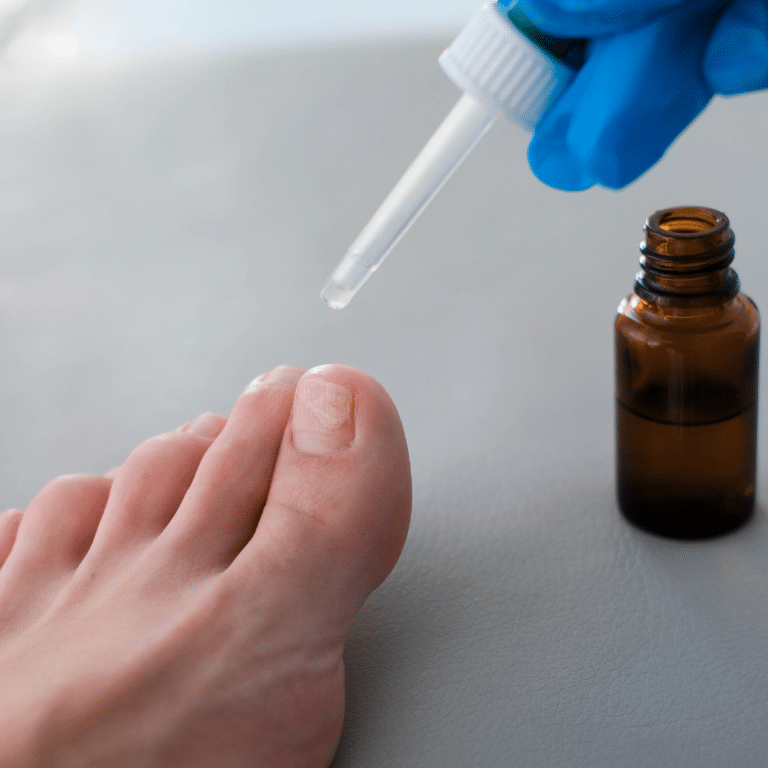Don’t worry, you’re not alone. Fungal nail infections are much more common than you might think, but the good news is they are highly treatable with the right approach.
How are fungal nail infections picked up?
Fungal infections spread through spores, and for a nail to become infected, these fungal spores must come in contact with the nail. Fungi thrive in damp, moist environments, making our feet vulnerable to infections. As our feet spend a majority of the day in shoes and socks, it creates a perfect breeding ground for fungal growth. Public showers, gyms, nail salons, and swimming pools are common places where infections can be picked up. It only takes an infected person before you to stand in the same spot for you to be at risk of picking up the infection yourself.
Certain factors can make you more vulnerable to fungal nail infections, such as being male, increased age, a compromised ability to fight infection, diabetes, smoking, and toenail injuries, among others.
Are there different types of fungal nail infections?
Yes, just like the many strains of colds and flus out there, there are different types of nail-infecting fungi. The two main types are Distal Subungal Onychomycosis, which causes discoloration, thickness, and crumbliness in the nails, and White Superficial Onychomycosis, which only affects the top layer of the nail, leaving white spots and chalkiness without added thickness or separation between the nail and skin.
It’s important to note that fungal infections can have similar appearances to other medical conditions, such as psoriasis and bacterial infections. To ensure an accurate diagnosis, it’s recommended to consult a podiatrist who can confirm whether you have a fungal nail infection or another condition.
How can fungal nail infections be treated?
Currently, there are three main treatment options for fungal nail infections: topical ointments/creams, oral antifungal medications, and laser treatment.
Topical creams are widely used but may not always provide effective results. Some strains of fungus are more stubborn and difficult to treat than others. Additionally, solely using an antifungal cream without addressing your environment (e.g., socks and shoes filled with microscopic fungal spores, contaminated shower) can lead to persistent infection and regular reinfection.
Oral antifungal medications are more potent than topical treatments and require a prescription. However, they come with potential risks and contraindications. Certain individuals, due to pre-existing medical conditions or medication interactions, may not be suitable candidates for oral antifungal medications.
Laser treatment has emerged as a highly effective and safe option for fungal nail infections. The Lunula Laser system offers excellent results without adverse effects. Unlike some lasers that can be painful and cause burns, the Lunula Laser is pain-free and poses no risk to the skin. Treatment sessions are quick, usually lasting around 12 minutes, and patients have reported positive experiences with the procedure.
Don’t let fungal nail infections hold you back from healthy, happy feet. Consult a podiatrist to determine the best course of treatment and take the necessary steps to eliminate the infection and restore your nails to their optimal condition with our Lunula Laser technology in clinic.









